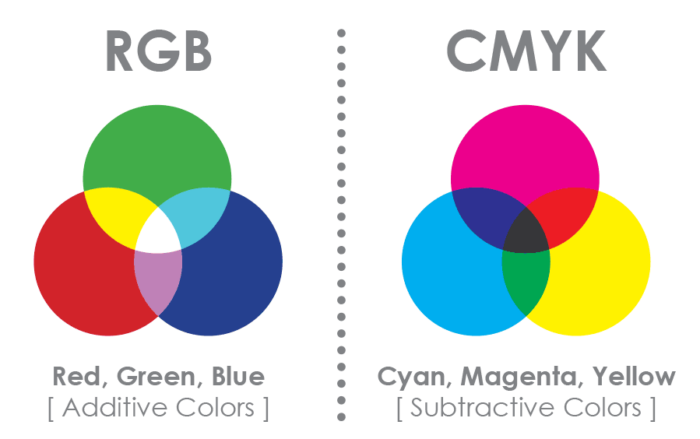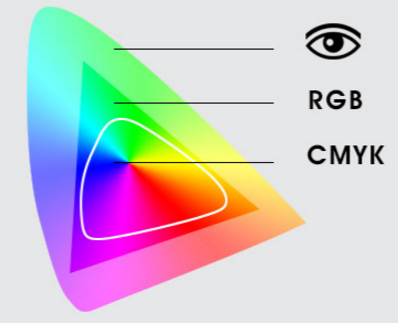Color Producing Technologies
There are two different color technologies at work when it comes to the colors we produce. RGB – Red/Green/Blue, affects what we see on computer and television screens, where colors and light are mixed in increasing brightness until you achieve white light when turned up to the maximum. The other is CMYK, and we see this in printed material, like enterprise ID cards, where colors also combine but with increasing darkness until a full mix will give us the appearance of black ink.
When these two technologies integrate, there can sometimes be complications if you’re expecting one technology to behave like the other; colors will only surprise or disappoint you. Understanding the differences in the mixing types will prepare you for card printing and designing, and how color matching will behave when you move from your design program to the physical card.

What’s the Big Difference?
Screen technology uses the RGB color mixing type to light millions of tiny little dots that make the screen; if you turn off the lights, the dot/pixel will appear black. The human eye automatically mixes such small Red, Green, and Blue lights at different levels, so we see whatever color was intended. All those dots next to each other become the picture we see on our computer or television screen.
For printing, Cyan, Magenta, Yellow, and Black are mixed with a similar concept; the tiny dots of four colors are placed very, very close together and rely on the human eye to combine them when viewing. The difference being

This is a Color Gamut, which defines a range within the spectrum of colors or color space, that can be reproduced on an output device. This compares what colors the human eye can perceive, compared to the RGB and CMYK production capabilities.
Best Practices and Solutions
This color technology discrepancy is the cause of many color matching complaints in the ID badge maker industry. Both color systems can be measured using a set of numbers; CMYK has a numerical range of 4×100; RGB has a numerical range of 3×256, so the vibrant colors RGB can produce are difficult to reproduce in CMYK.
However, even the best design software on the market struggles with translating the set of numbers for RGB into a CMYK version that ensures color consistency. There’s also the factor of screen settings, meaning one image may even be different on one screen versus another. And finally, even the best ID printer has some heat variation while running, causing variation in any batch of cards.
It’s not impossible to design print projects with CMYK or RGB in mind. Many modern design programs have settings that help you achieve the closest color match. When printing for high-quality ID cards, explore the computer program you’re using to see whether you can change the RGB default color mode to CMYK before designing your cards.
ADVANTIDGE provides organizations with multiple options for technical support, including training sessions and annual support plans.
Contact us today for a consultation from our print experts who can help you manage the entire color space and achieve vibrant, consistent results.


